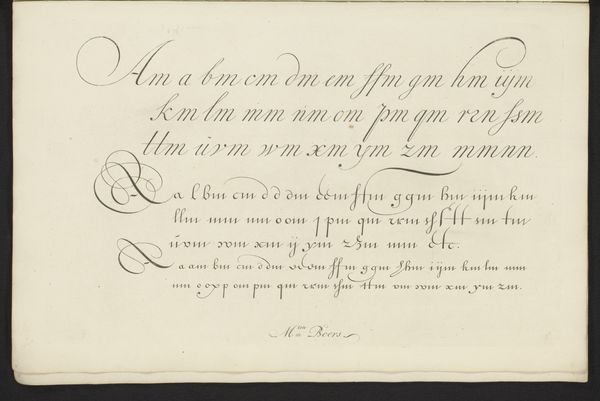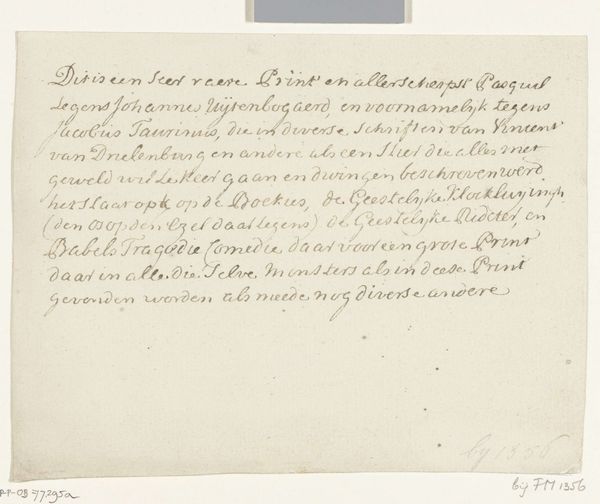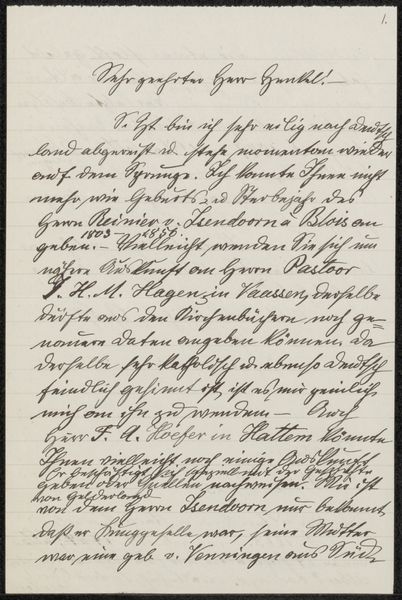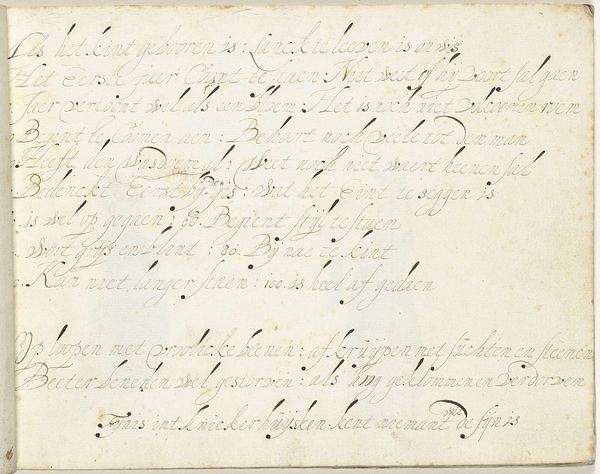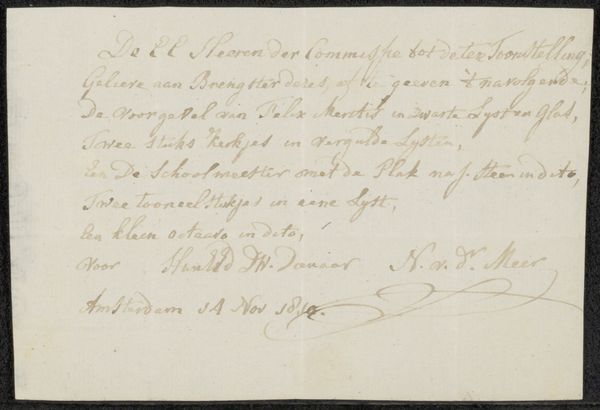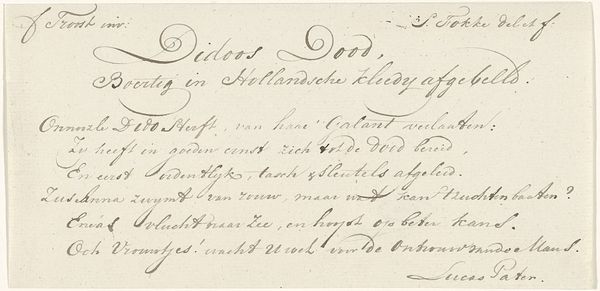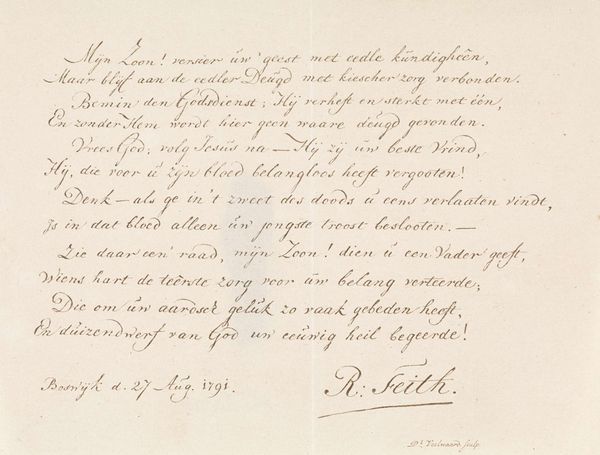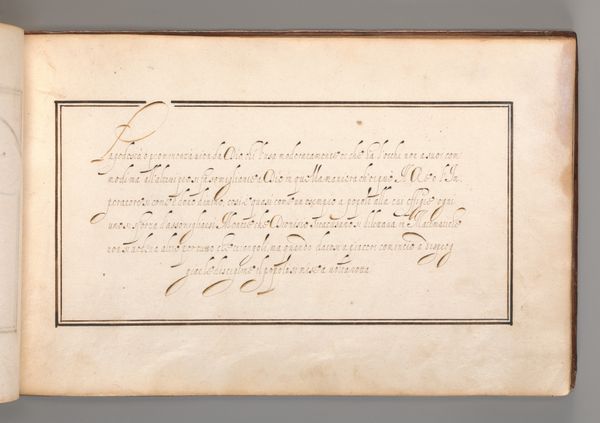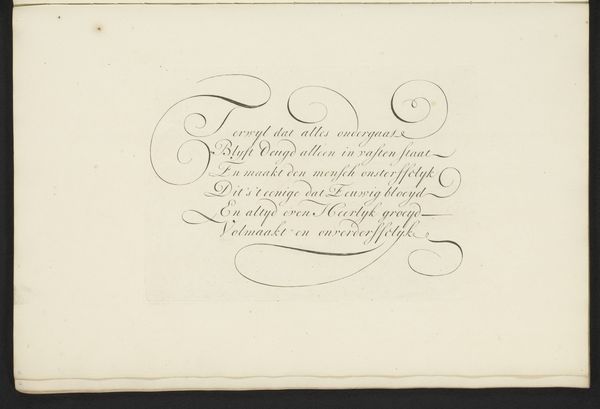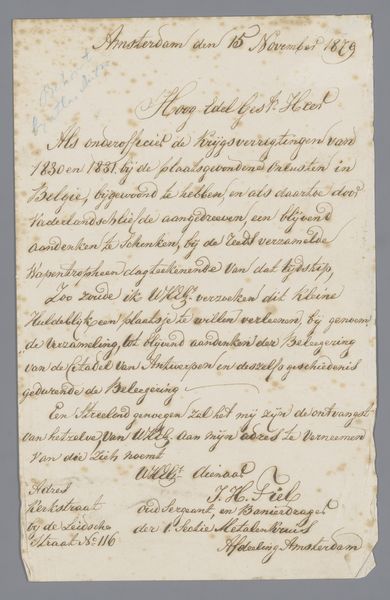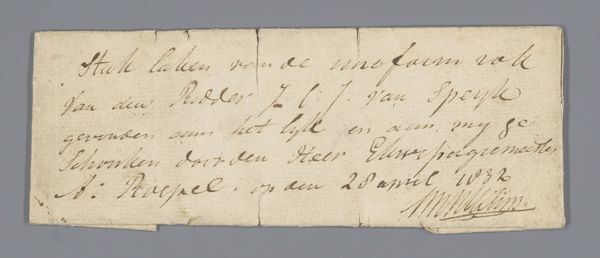
print, paper, typography, engraving
#
portrait
#
baroque
#
dutch-golden-age
# print
#
old engraving style
#
hand drawn type
#
hand lettering
#
paper
#
typography
#
history-painting
#
engraving
Dimensions: height 42 mm, width 150 mm
Copyright: Rijks Museum: Open Domain
Editor: This print, "Lofdicht op een portret van Philippus van Limborch," dates back to between 1711 and 1713. It’s anonymous, currently housed in the Rijksmuseum, and the technique involves engraving. My initial impression is one of stillness and formality. The script feels almost like peering into a historical document. What do you see in this piece, looking beyond the obvious? Curator: It whispers of forgotten narratives, doesn’t it? The formal script, undeniably beautiful, also serves as a kind of filter, obscuring the raw emotion. This is a carefully constructed image, intended to convey a specific message about Philippus van Limborch. It reminds me of how we carefully curate our own stories today through social media – choosing the perfect angle, the right filter, to present an idealized version of ourselves. What was Limborch's influence at that time, do you think? Was it political or intellectual? The language suggests a connection to faith, perhaps. Editor: It’s almost like an early form of propaganda, now that you mention it. He may have been a Theologian? So, the text and image together are a deliberate attempt to shape his legacy? The artist and client want the viewer to percieve Limborch a certain way? Curator: Precisely! Think of it as an attempt to solidify a particular narrative, etching it into public memory. It begs the question: Whose story are we truly seeing? And what has been omitted in this carefully crafted piece of Baroque praise? The absence of color almost strengthens its statement, drawing focus to the script. What I learned by contemplating this "historical figure plus stylized type layout," that, at any era, every image has always its spin, whether intended or not, because to truly capture a spirit requires time, motion and genuine contact. Editor: It's fascinating to consider how even seemingly straightforward portraits can be complex acts of image-making. I agree that history lives in even the most understated details, which in fact often hold more secrets than sweeping accounts.
Comments
No comments
Be the first to comment and join the conversation on the ultimate creative platform.


